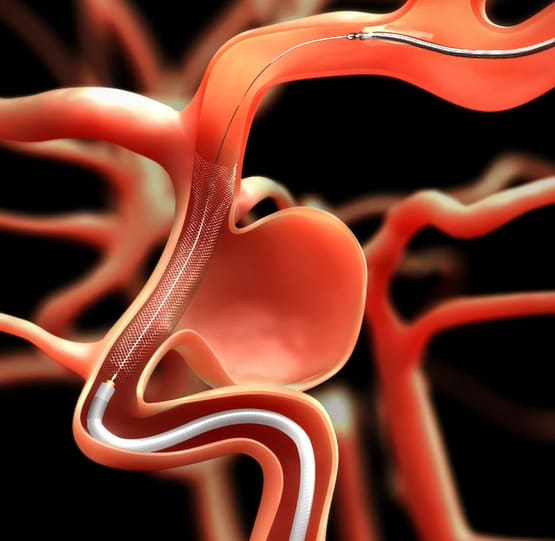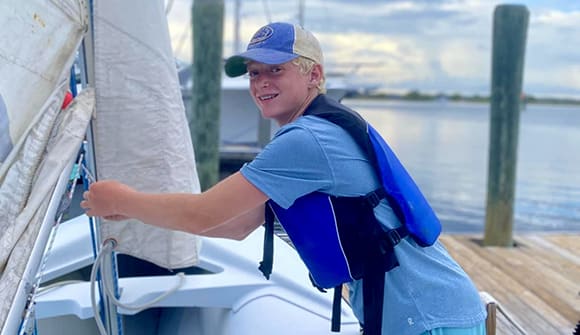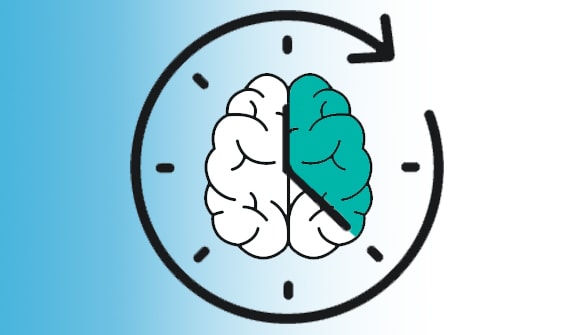‘Pipeline’ works on aneurysms of all sizes, study shows
International study by Baptist neurosurgeons gives option to patients with small and medium-sized brain aneurysms
Article Date:

A cylindrical “pipeline” used for treating large brain aneurysms is just as effective on smaller and sometimes harder to reach ones, according to the results of a clinical trial announced Wednesday.
The study’s findings were presented at the International Stroke Conference in Houston by Ricardo A. Hanel, MD, PhD, neurovascular surgeon with Baptist Health and Lyerly Neurosurgery and director of the Baptist Neurological Institute. Eric Sauvageau, MD, neurovascular surgeon and director of the Baptist Stroke & Cerebrovascular Center, was also a co-author and co-investigator on the study.
“This study shows the benefit of this breakthrough technology for smaller aneurysms. It demonstrates that the Pipeline ™ Embolization Device is a safe and effective way of dealing with under 12 millimeter aneurysms,” Dr. Hanel said. “The good thing about the pipeline device is once the aneurysm is closed off and treated, the patient is cured, which is very empowering.
“The Pipeline is likely more durable and, in the hands of experienced operators like the ones in the study, has low complication rates,” he added.
A cerebral aneurysm (also known as an intracranial aneurysm) is a weak or thin spot on a blood vessel in the brain that balloons out and fills with blood.
The Pipeline, a braided cylindrical mesh known as a flow diverter, is inserted through a microcatheter into an artery in the groin. The device is then threaded through the body to the brain to slow the flow of blood into the aneurysm and allow the diseased vessel to heal.
The Pipeline is currently approved by the U.S. Food and Drug Administration for adults with large aneurysms (which are greater than 12 mm). The results of the clinical trial could open up the procedure for use on patients with small- and medium-sized, wide-necked, unruptured aneurysms, which make up the majority of the cases.
"This study confirms that flow diversion is a valid alternative to complement our existing techniques to fix brain aneurysms,” Dr. Sauvageau said.
PATIENTS GRATEFUL TO BE ALIVE
Twenty-two sites in the United States and one in Canada participated in the PREMIER study and 141 patients, including 21 from Baptist Medical Center Jacksonville, which had the highest number enrolled.
The study found that a high rate of aneurysms were completely healed at the one-year follow up, with no cases of recurrence. There were also no incidents of aneurysms rupturing one year after the procedure. These results will be submitted to the FDA for review.
Dana Bean, of Fernandina Beach, was one of the first to participate in the study; Kristine Meyer, from Mandarin, was the last. Both had successful treatment and surgery at the Baptist Neurological Institute and the Stroke & Cerebrovascular Center at Baptist Medical Center Jacksonville and Lyerly Neurosurgery.
Bean, now 54, had lived with a small, hard-to-reach brain aneurysm for six years. It was in the exact spot as the aneurysm that took her mother’s life when Bean was just 6. Her mother collapsed on the playground, as Bean and her brothers played nearby. An ambulance came and she never saw her mother again.
She used to wake up in the middle of the night worrying that her aneurysm would burst. In 2014, she became just the second person in the world to be part of the Pipeline clinical trial. At her two-year follow up this past fall, Bean described life without the aneurysm.
“Before I worried about dying or being a burden to other people,” she said. “I wanted to be here for graduations, weddings and new babies and the future. Now that I’m cured, I know to seize every day. I live every day to the fullest and I’m excited about the future.”
The 42-year-old Meyer worried that her brain aneurysm would burst while driving in her car, with her young children in the back seat. She had the Pipeline procedure in November 2015. Last October, she learned that her aneurysm was gone after shrinking over time. “That was the best Thanksgiving gift I could have received. I don’t have to live with that fear anymore of what could go wrong,” Meyer said.
More than a year earlier, she had been experiencing numbness in her arm, dizziness and headaches, which led to the discovery of her aneurysm. “My equilibrium was off, which wasn’t the norm for me. I felt like something was wrong,” Meyer said.
The aneurysm was in a difficult location behind her eye and nose, and Meyer said she didn’t want to risk any complications from other more invasive brain surgeries. Using the Pipeline, Dr. Hanel was able to reach the aneurysm and redirect the blood flow away from the aneurysm. The commercial real estate broker was home the next day and was back to work in just two weeks.
“Dr. Hanel really took time explaining the procedure and answering questions with not only me, but my husband and mother. We never felt rushed,” Meyer said. “I was excited I had the opportunity to participate [in the study], otherwise I would have had to live with it and not know if and/or when it was going to rupture.”



